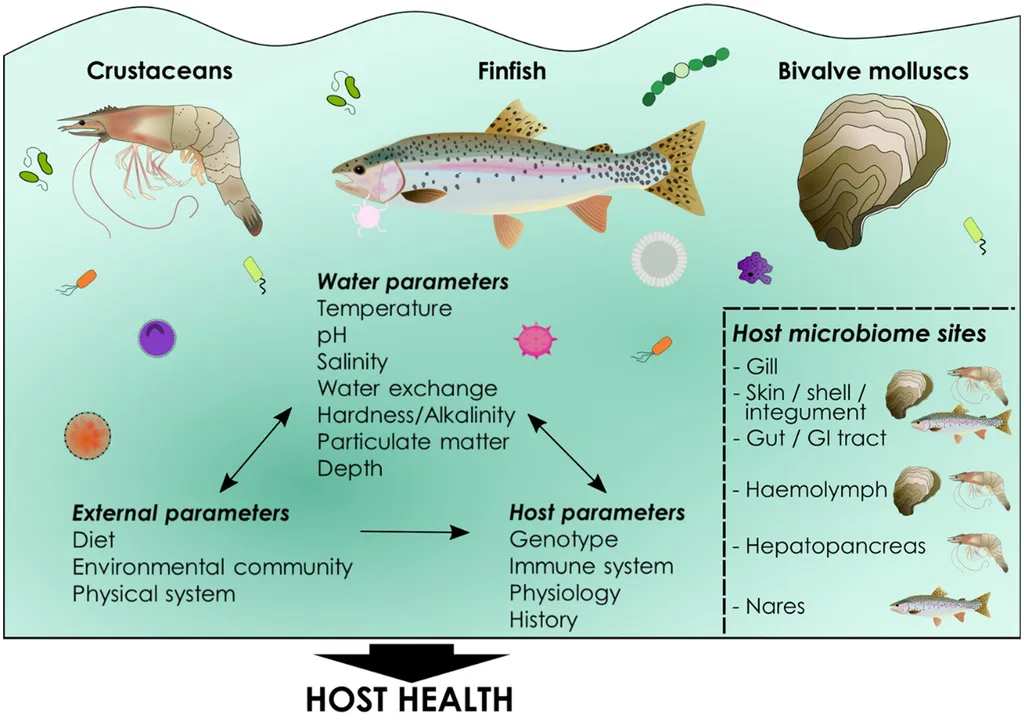In the heart of aquaculture research, a groundbreaking study has unveiled the intricate dance between gut microbiota and fatty acid profiles in the striped murrel, Channa striata, a fish celebrated for its nutritional prowess. Published in *Scientific Reports*, this research, led by Bayasis M. Sharma from the Fish Genetics and Biotechnology Division at ICAR-Central Institute of Freshwater Aquaculture, sheds light on the complex interplay that could revolutionize fish farming and nutritional optimization.
The striped murrel, known for its antimicrobial, antioxidant, anti-obesity, and anti-inflammatory properties, owes much of its nutritional value to its rich content of short-chain and polyunsaturated fatty acids (SCFAs and PUFAs). Unlike many food fish, it successfully breeds in captivity, making it a valuable commodity in the aquaculture industry. However, the specific composition of its gut microbiota and its influence on fatty acid profiles have remained underexplored—until now.
Sharma and his team delved into the gut bacterial communities of striped murrel, examining sex-specific differences and their association with fatty acid profiles across two rearing conditions: fish maintained in water tanks (T1) and those reared in pond-simulated habitats (T2). The study employed high-throughput 16S rRNA gene amplicon sequencing (V3-V4 region) on gut tissue samples and analyzed muscle tissue samples for fatty acid profiling.
The findings were striking. Habitat significantly influenced both fatty acid and microbiota composition. Females from pond-simulated habitats (T2) showed higher levels of palmitic and linoleic acids, while those from water tanks (T1) had greater oleic acid. The study also revealed that females exhibited greater species richness and Shannon diversity in their gut microbiota, with a higher abundance of Alphaproteobacteria. In contrast, males had higher levels of Clostridia and Fusobacteriia.
“Our findings highlight the intricate relationship between gut microbiota and fatty acid profiles in striped murrel,” Sharma noted. “This understanding could pave the way for targeted interventions to enhance the nutritional value of farmed fish.”
Functional predictions revealed that females exhibited higher enrichment in energy metabolism, lipid biosynthesis, and xenobiotic biodegradation, while males showed greater enrichment in nucleotide and amino acid metabolism. Key microbial taxa such as Methylobacterium organophilum, Pseudomonas stutzeri, and Faecalibacterium prausnitzii were found to contribute to PUFA synthesis and antioxidant production.
The study also highlighted the importance of co-occurrence networks, with females displaying stronger interactions and connectivity compared to males. Notably, Cetobacterium somerae, Clostridium perfringens, and M. organophilum were key taxa in females, while Propionibacterium acnes, M. organophilum, and Plesiomonas shigelloides were prominent in males.
The implications for the aquaculture industry are profound. By understanding the sex- and habitat-specific gut microbiome dynamics, researchers can develop strategies to optimize the fatty acid composition of farmed fish, enhancing their nutritional value and market appeal. This research could lead to more sustainable and efficient aquaculture practices, benefiting both producers and consumers.
As Sharma and his team continue to explore these interactions, the future of aquaculture looks brighter. The study, published in *Scientific Reports*, marks a significant step forward in our understanding of gut microbiota and fatty acid profiles in striped murrel, offering promising avenues for innovation in the field.

